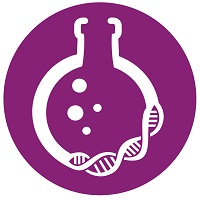Bioanalytics
Rapid Fires: Using Mass Spec to Support PD/PK
Linker-Cleavage Enzyme Comparison for Hybrid LC-MS Analysis of Antibody-Drug Conjugates
Tuesday, November 11, 2025
3:00 PM - 3:15 PM CT
Location: 221 CD

Karan Agrawal, PhD (he/him/his)
Principal Scientist
Johnson & Johnson
Spring House, Pennsylvania
Rapid Fire Speaker(s)
Current ADC hybrid LC-MS assays have low throughput since samples need to be injected twice to analyze the total antibody and conjugated payload. Additionally, the linker-cleavage enzyme commonly used in LC-MS assays is sensitive to the linker amino acid sequence, which can make analysis of novel linkers challenging. This presentation introduces alternative workflows that overcome both challenges. Workflows presented include assays where both components of an ADC are analyzed using a single sample injection, and the use of alternative linker-cleavage enzymes to analyze ADCs with novel linkers. All workflows demonstrated similar sensitivity and acceptable accuracy and precision. Data from incurred samples analyzed by these novel workflows were comparable to that generated by current ADC hybrid LC-MS and LBA workflows. Overall, this presentation offers options to improve throughput, simplify the sample preparation process or analyze novel ADCs by hybrid LC-MS, and demonstrates the comparability of LC-MS to LBA for ADC bioanalysis.
Learning Objectives:
- Upon completion, participants will be able to recognize the strengths and limitations of current ADC bioanalytical assays.
- Upon completion, participants will be able to identify alternative linker-cleavage enzymes that can be used to increase assay throughput or digest novel ADC linkers.
- Upon completion, participants will be able to understand the appropriate use of these workflows during drug discovery and development.


